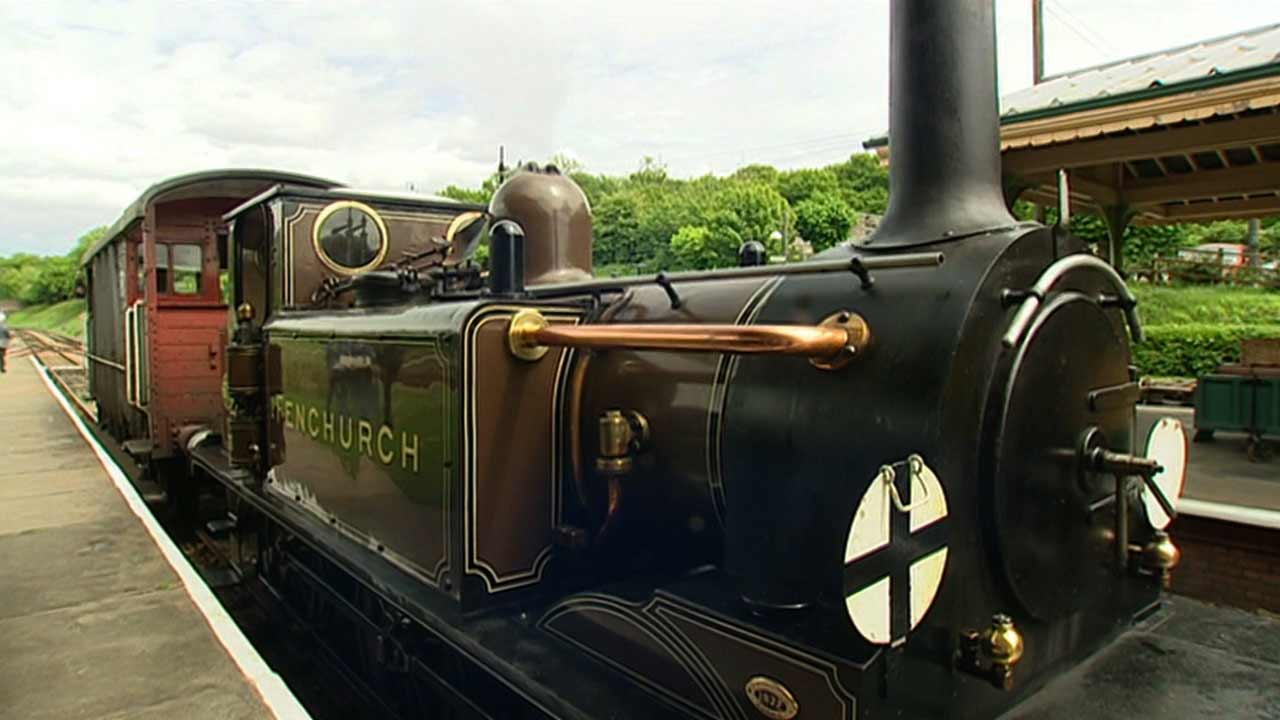Age of Steam episode 2: Fred Dibnah traces the development of steam power, from early colliery railways to the end of steam travel in Britain in the 1960s. Fred Dibnah traces the development of steam power from the earliest experiments in the ancient world to the modern nuclear power station.
As we navigate through the 21st century, it is important to remember the industrial roots that have shaped the modern world. One of the most impactful periods in history, the Industrial Revolution, was an era marked by significant advancements in steam power technology. “Fred Dibnah’s Age of Steam” offers a captivating and informative exploration of this transformative period. Join us as we delve into the riveting world of steam engines, their impact on society, and the man who dedicated his life to preserving and sharing this knowledge – Fred Dibnah.
Age of Steam episode 2 – A Journey from Early Colliery Railways to the End of Steam Travel in Britain
The Dawning of the Age of Steam The Age of Steam is an era that has shaped Britain in ways both visible and invisible. As the steam engine burst onto the scene, it sparked a revolution that transformed the landscape of the country, accelerating the pace of life and leaving an indelible mark on British history. In this article, we embark on a journey through the history of steam travel, from the early colliery railways to the end of steam travel in Britain in the 1960s.
The Emergence of Colliery Railways:
Fueling the Industrial Revolution The birth of the Age of Steam can be traced back to the colliery railways of the late 18th century. As Britain’s appetite for coal grew, so too did the need for an efficient means of transporting this precious resource. Enter the colliery railways, a network of tracks connecting coal mines with rivers and canals, which allowed the speedy and efficient delivery of coal to fuel the ever-growing industries of the Industrial Revolution.
Pioneering engineers like George Stephenson and Richard Trevithick developed innovative steam engines, which harnessed the power of steam to pull wagons laden with coal. The success of these early colliery railways paved the way for the expansion of railways across the country.
The Expansion of Railways:
Connecting the Nation As steam engines grew more powerful and efficient, the potential for using railways for passenger transport became increasingly apparent. The Stockton and Darlington Railway, which opened in 1825, was the world’s first public railway to use steam locomotives. This groundbreaking venture heralded a new era of transportation, sparking a frenzy of railway construction throughout Britain.
By the 1840s, a web of rail lines crisscrossed the British countryside, linking cities and towns with unprecedented ease. This rapid expansion of railways connected the nation, revolutionizing the way people lived, worked, and traveled.
The Golden Age of Steam:
The Victorian Era The Victorian Era saw the heyday of steam travel, with elegant steam locomotives like the “Flying Scotsman” and “Mallard” becoming iconic symbols of the age. Railway stations became architectural marvels, adorned with intricate ironwork and ornate stonework. Train travel was no longer merely a means of transportation but a luxurious experience, with opulent dining cars and plush first-class compartments offering unparalleled levels of comfort.
During this golden age, steam engines were continually improved and refined, becoming faster and more efficient. The introduction of the Bessemer process in the 1850s led to the production of cheaper, stronger steel, which allowed for the construction of larger and more powerful locomotives.
The Decline and Demise:
The End of Steam Travel in the 1960s The 20th century brought about significant advancements in technology, and steam engines started to fall behind their diesel and electric counterparts. As steam travel entered its twilight years, the British railway system underwent a period of modernization and rationalization, leading to the eventual end of steam travel in the 1960s.
The infamous Beeching Report of 1963 recommended the closure of thousands of miles of railway lines and hundreds of stations, marking a turning point in the history of British railways. Steam locomotives were gradually phased out in favor of diesel and electric trains, which were seen as more economical and environmentally friendly options. By 1968, steam travel had come to an end in Britain, with the last mainline steam locomotive, the “Evening Star,” making its final journey.
The Legacy of the Age of Steam – Age of Steam episode 2
Although the Age of Steam has long since passed, its impact on Britain’s landscape, economy, and culture remains deeply ingrained. The sprawling rail network laid the groundwork for modern transportation, while the innovation and engineering prowess that characterized the era continue to inspire generations of engineers and inventors.
Today, the echoes of the Age of Steam can be found in the preserved railway lines, museums, and heritage steam locomotives that still traverse the British countryside, serving as a nostalgic reminder of a bygone era. The Age of Steam may have ended, but its legacy continues to shape the story of Britain.
In Age of Steam episode 2 you will find answers to this questions:
- When did steam travel end in Britain?
- What was the first public railway to use steam locomotives?
- How did steam travel impact Britain?




